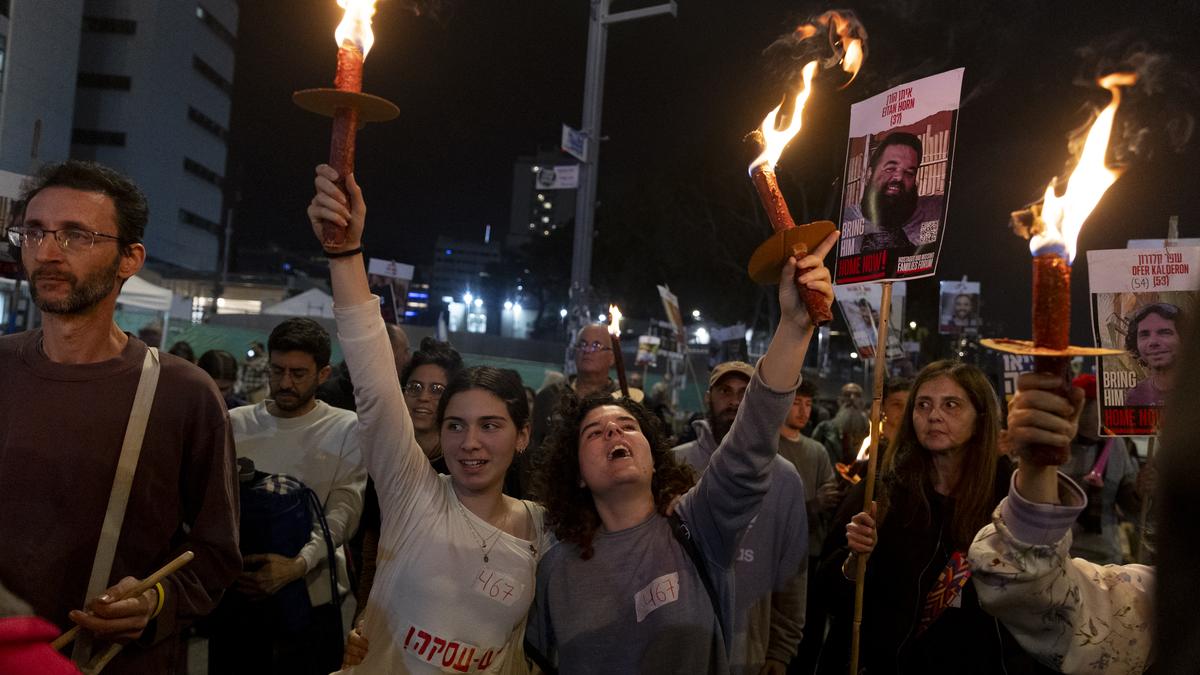Is the Gaza ceasefire a turning point or a temporary fix? After over a year of devastating conflict, a three-phase ceasefire agreement has been reached, bringing a glimmer of hope to the war-torn region. But can this fragile peace hold? The deal involves complex prisoner exchanges and increased humanitarian aid, but shadows of doubt still linger. Will the ceasefire herald a new era of stability, or is it merely a prelude to another outbreak of violence?
Understanding the Gaza Ceasefire Agreement: A Comprehensive Overview
The recent ceasefire agreement in Gaza marks a significant development in the protracted conflict. Brokered through painstaking negotiations involving Egypt, Qatar, and US officials, this intricate three-phase plan aims to bring an end to the hostilities and establish a more lasting peace. Each phase of the deal plays a crucial role. Phase one involves a temporary pause in fighting to pave the way for the humanitarian phase. Then comes phase two and finally phase three that brings prisoners on both sides and opens avenues to bring lasting peace in the middle east.
The Delicate Balance of Prisoner Exchanges
A key element of the agreement focuses on the complex exchange of prisoners. Hamas is set to release Israeli captives, paving the way for the release of thousands of Palestinian prisoners held by Israel. This delicate negotiation carries immense symbolic weight and could act as a pivotal element toward establishing lasting peace, depending on successful negotiations. Its failure will open another opportunity for Hamas and Israel to go back to war.
A Surge in Humanitarian Aid: Addressing Urgent Needs
The ceasefire also includes provisions for a substantial increase in humanitarian aid to the Gaza Strip, which has been ravaged by months of fighting. This crucial component aims to address the urgent needs of the civilian population. However, several key factors may affect the effectiveness of aid delivery. These include the efficiency and impartiality of the delivery system and security conditions on the ground.
Is This Truce More Than Just a Temporary Band-Aid? The Challenges Ahead
While the ceasefire agreement brings respite to those affected by the ongoing war, the challenges to peace remain considerable. Maintaining trust and successfully navigating the complex details of prisoner exchanges will require vigilance and continued commitment from all parties involved. Past failures indicate that future compliance to a permanent ceasefire can't be taken lightly.
Israel and Netanyahu's Stance: Navigating Domestic and International Pressures
The ceasefire agreement has considerable implications for both the domestic political scene and Israel's standing on the international stage. Prime Minister Netanyahu faces the monumental task of convincing Israelis skeptical of the agreement while ensuring the deal does not undermine the nation's security interests.
A Delicate Balancing Act: Navigating Domestic and International Politics
Netanyahu's decision-making is bound by various factors and pressures. It faces a fine line to walk, requiring effective international diplomacy while mitigating domestic political vulnerabilities. Will these negotiations pave the way towards a truly comprehensive peace, or will it lead to further friction in the region? That remains the unanswered question, hanging on the very essence of these negotiations and what kind of cooperation is witnessed between all parties involved.
Lasting Impact and Geopolitical Implications
The implications of the ceasefire will have global repercussions. The accord's success and implementation will depend heavily on effective diplomacy among all involved players. Regional stability might also see an effect. It may open new doors to broader collaboration in the region and even help solve other diplomatic issues at hand.
The Road Ahead: Factors that Could Influence the Long-Term Prospects for Peace
Even with a successful agreement signed, various elements could greatly influence this agreement's long-term effects. Trust and cooperation between the two parties are important for building a longer lasting peace.
Monitoring Compliance and Ensuring Transparency: Essential for a Lasting Agreement
Careful and ongoing observation is essential for guaranteeing that this cease fire agreement lasts. With transparency being a cornerstone in making sure both parties comply, many observers remain hesitant to fully embrace the agreement just yet. Ensuring fairness for everyone involved will play an important part for stability in the area.
Long-Term Strategies: Laying the Groundwork for Future Agreements
Success in this agreement lays the groundwork for future ones, should these types of conflicts happen again. That is why building a strong foundation of trust and peace is necessary.
Take Away Points
The recent Gaza ceasefire agreement represents a fragile but significant step towards ending the conflict. The prisoner exchanges, humanitarian aid provisions, and the phased approach of this intricate deal are notable, although several major uncertainties remain regarding the long-term future of this hard-won peace. A commitment to monitoring compliance and a clear strategy for fostering lasting cooperation between all involved parties is important to truly ensuring a lasting agreement. Only time will tell if this represents a true turning point or merely a short reprieve.




